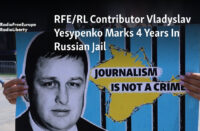The past week has been a tumultuous one, marked by two impromptu summits in Europe and anxious remarks by Ukraine’s President, Volodymyr Zelenskyy. These incidents highlight the growing apprehension in capitals from Kyiv to London.
The primary concern stems from speculations that the U.S. and Russia might attempt to negotiate a deal regarding Ukraine’s future without involving Kyiv or U.S. allies in Europe.
President Donald Trump contributed to this anxiety through his post on Truth Social, where he accused Zelenskyy of dictatorship and claimed that successful negotiations to end the war with Russia were underway.
U.S. officials, however, refuted claims of intending to exclude anyone from the negotiations. Despite this, suggestions that Europe might not have a seat at the negotiation table has triggered widespread concern. Additionally, the optimistic atmosphere surrounding the U.S.-Russia meeting in Riyadh on February 18 has added to the unease.
At this point, two crucial questions arise: Can Washington and Moscow find common ground on a deal to end the Ukraine conflict, and if they do, what can the rest of the world do about it?
The White House is undoubtedly seeking peace, but Moscow’s intentions aren’t as clear. Trump’s special envoy for Ukraine and Russia, Keith Kellogg, arrived in Kyiv on February 19, mere hours after Russia’s strikes on Ukraine. These attacks left approximately 250,000 people without power in the freezing port city of Odesa.
In Russia, Foreign Minister Sergei Lavrov declared to the State Duma that the crisis cannot be resolved simply with a ceasefire.
If Russia is open to negotiations, it seems they intend to drive a hard bargain. The worst-case scenario for Ukraine and its European allies is that the U.S. might agree to such a deal.
U.S. officials maintain that both parties involved in the conflict need to make concessions. However, they haven’t provided any specifics regarding Russia’s potential concessions.
Special Envoy Keith Kellogg, when asked about this at the Munich Security Conference on February 15, suggested that territorial concessions and the renouncement of force might be part of the deal.
Critics argue that the U.S. is conceding too much too soon in a bid for a swift diplomatic victory. But what happens if a deal is reached that isn’t supported by Ukraine or Europe?
Ukraine’s Foreign Minister, Andriy Sybiha, when asked about this, said that Ukraine knows how to fight back, as they have proven on the battlefield.
However, without U.S. support, it will be challenging for Ukraine to resist. So far, Europe has provided more aid to Kyiv than the U.S., as per the Kiel Institute of the World Economy. This aid includes military, financial, and humanitarian support.
Despite this, the U.S. remains the largest provider of military aid, emphasizing the challenges Ukraine would face without U.S. backing. To compensate for this, Europe would need to significantly increase its overall support to Kyiv.
European leaders have consistently stated their commitment to supporting Ukraine for as long as necessary. But this doesn’t address whether they would be willing to substantially increase this aid to fill the gap.
The possibility of a European peacekeeping force, to be deployed in Ukraine following a potential ceasefire or peace deal, has been discussed. However, this would require U.S. involvement and support.
Given the financial constraints and political divisions, it’s uncertain whether Europe can step up to the task. So far, every move has needed America’s guidance and support.




